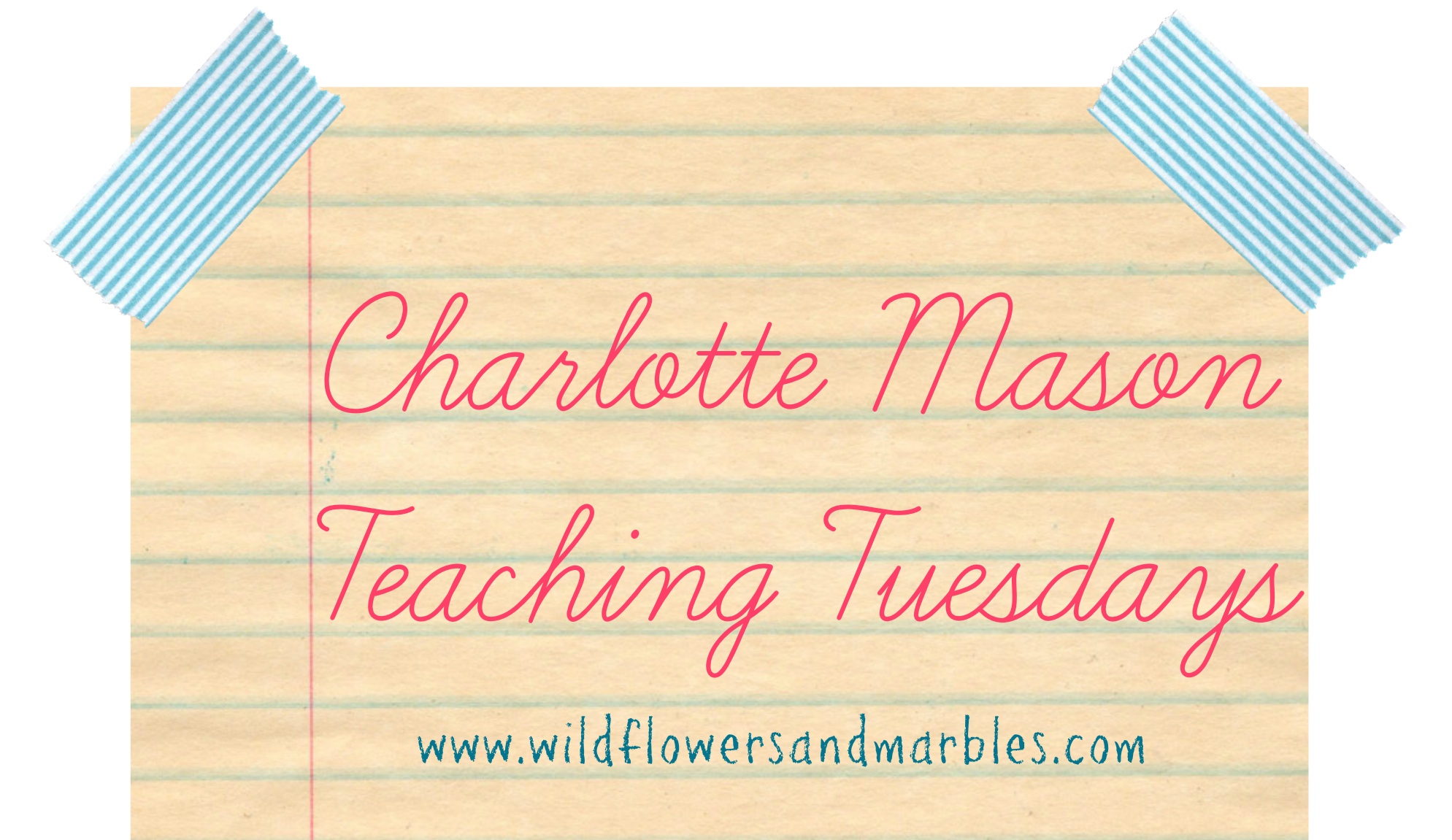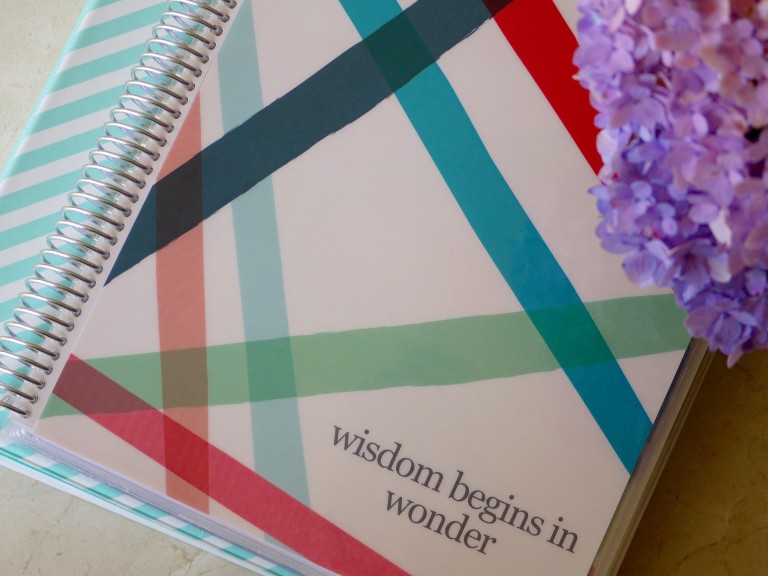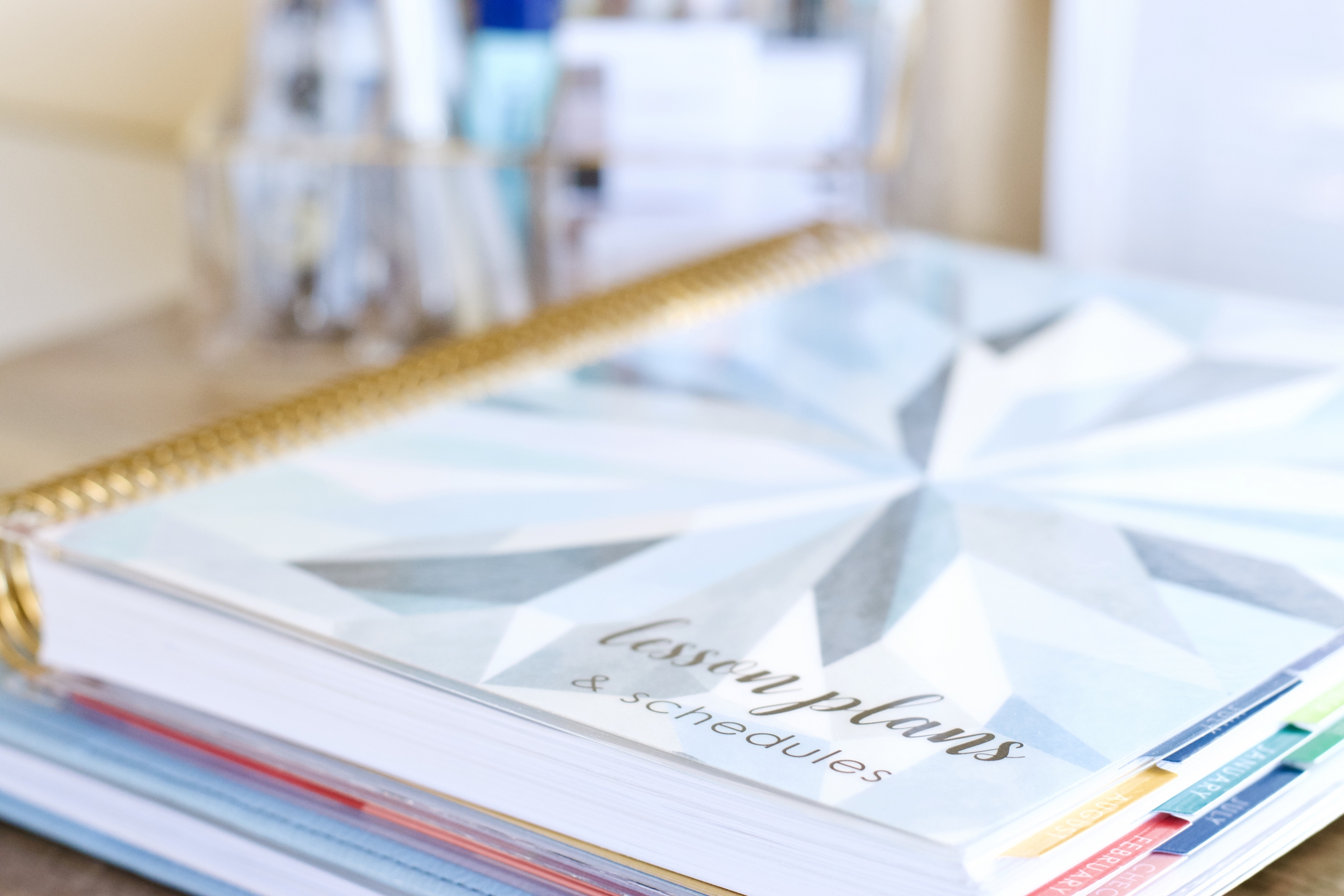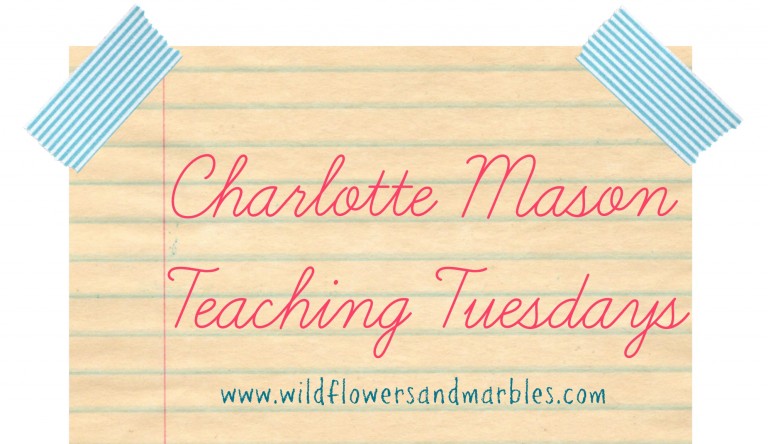Charlotte Mason Teaching Tuesday – Open Doors To Avenues of Delight

I’m continuing a series that I’m really enjoying and I’m (re)learning so much! Join me as we discuss Charlotte Mason and her thoughts on our role in teaching. Today’s lesson:
Open Doors
We wish to place before the child open doors to many avenues of instruction and delight, in each one of which he should find quickening thoughts.
School Education, p. 170
The selection for this week is actually the very beginning of an entire paragraph which details the limitations necessary to a CM teacher, but there is so much in this one sentence alone that I chose it as the basis for this week’s post. I like this selection for so many reasons, and one of those reasons is the universality I find in Charlotte Mason; I can apply these thoughts with equal measure whether I’m thinking of my 1 year old or my 17 year old. So, with that in mind:
- The teacher brings the child to the open door.
- Our role as teacher is an active role, but it isn’t the typical form of teacher-as-lecturer-guru-and-dispenser-of-all-knowledge. The teacher places the child before the open door from a place of peace in her understood authority in order for the child to follow. See? It’s that coming alongside that involves a trust relationship and says, “Let me show you an open door that leads to delight – a door you’ll want to go through.” I can’t help but make a connection to the door in Lewis’ wardrobe. What treasures and adventures await the children! But they must go through the door first – the adventures beyond are theirs to explore.
- The teacher’s role here is to be able to find, identify and lead a child to an open door which leads to avenues of instruction and delight. Can you recognize an open door? As a Charlotte Mason educator, this is a primary part of our role so it’s worthwhile to spend some time identifying some open doors.
- If needed, spend some time learning how to identify a living book. Then invest time and budget to build an excellent living library. These are open doors. In a nutshell, a living book consists of “inspiring tales, well told.” Read more about living books here. In general, these are the Good Books (find an excellent list of Good Books here). You’ll make no better investment in your role as teacher than to begin to build a bank of books and authors that are wise and trusted friends that consistently point to “avenues of instruction and delight”.
- Be able to identify toys and educational tools that are open ended – in other words, they invite the imagination to act on them. These are open doors. (An example would be building blocks, legos)
- Look for opportunities that invite exploration – these would be things like time out of doors, a trip to a museum, a nature walk, cooking at your side.
- At the beginning of every week, consider whether or not you will bring your child to the good, true, and beautiful in some way. These are open doors. Through picture study of beautiful art — listening to beautiful music — reading poetry — instruction in catechism, doctrine, and God’s word so that the child learns that there is absolute, objective good.
- Notice that Miss Mason doesn’t instruct the teacher to walk a child through the open door. Our role as teacher isn’t in telling the child what to look at, explore, like, intuit, abstractly deduce, or otherwise frolic with once through the door. Our job is to bring them to the door; their job is to proceed and investigate. You’ll find this theme throughout Miss Mason’s works – the idea that the child learns in his digging. If you’ll allow me to mix metaphors, our role is to bring the child to the feast of ideas, their job is to eat and digest the rich feast before them. We can’t eat the feast first and then…regurgitate it and give it to our child. There is no value in that for the child. He owns nothing. If we go back to our door analogy, I could walk a child up to a closed door, tell him that there are wonderful delights beyond the door but that it would be best if he stayed outside the door – waiting – while I, as teacher, walk through to experience, read, learn, value, and then come back outside to the child waiting on the other side of the closed door, telling him what delights, wonders and knowledge has just been gathered on his behalf….and expect the child to get excited about the knowledge we’ve secured for them. No child is inspired by that. Bring the child to the open door. Allow him to enter and delight in the feast on the other side.
- The open door is an avenue of instruction and delight.
- This speaks to the inviting nature of the avenue which is through the open door.
- As you begin to become familiar with open doors, consider that an essential component is whether or not there is an avenue that leads to instruction and delight beyond that door.
- An avenue implies that there is a journey, that the child will be an active participant in traveling to a destination. This eliminates books, experiences and things which do all the work for the child, and as teacher, we would do well to remove these or at least minimize them (often referred to as twaddle, or you could think of them as potato chips – a little on the side is probably ok, but make enough meals out of them and there will be an alarming lack of nutrition). These would be textbooks, which are essentially just tomes of information that bullet specific facts that someone considered essential; opportunities which are so structured that they do not allow the child freedom to choose or explore; toys which do not allow a child to exercise the imagination and animate an experience in a variety of ways.
- An avenue goes to instruction AND delight. Here is where we hint at the idea that education is a discipline. It’s still living, and the child walks through an open door. Not every avenue is easy to travel along. Sometimes the way is hard, challenging, hard work. It is worthwhile though; the avenue is instructive. This kind of avenue really requires that relationship of authority we spoke about in the first post. If you, as teacher, are going to ask your child to labor along an avenue that is challenging and worthwhile, you’ll need to be able to exercise an authority that is willing to listen, encourage, and provide sympathy while maintaining discipline so that a child doesn’t just stop along an avenue, stuck along the way, unable to motivate or navigate.
- Along these avenues the child finds quickening thoughts
- The phrase “quickening thoughts” can be an obstacle to understanding, but in defining “quickening” I find the key: to spring to life; become animated; give or restore life; the archaic meaning literally meant that something was beginning to show signs of life. Imagine thoughts that have been invigorated, kindled, inspired, and have come alive. The child’s thoughts are transformed once through the open door. With living books, opportunities and things the imagination is nurtured, built, and the child’s thoughts are now animated with life.
- Living things grow and mature. Isn’t it amazing how this cohesive idea finds itself repeating, ever fresh, throughout Charlotte Mason’s philosophy?
The teacher guides the child to the open door –>
The child works and travels along the avenue of instruction and delight –>
The child’s imagination is nurtured. Inspired, his thoughts are living –>
And other open doors are encountered.
Idea unfolds onto idea.
Homework: build a proficiency in identifying open doors so that, as teacher, you can exercise your authority in bringing your child to these avenues of instruction and delight.
- If you’re unsure about your ability to identify a living book, read more about them and see if you can’t begin to build a familiarity with them.
- Go through your bookshelves – proportionally speaking, you should find more Beatrix Potter, A.A. Milne, Kate Greenaway and the like than other cartoony-twaddle. If your bookshelf features >>insert any current cartoon personality featured on Nickelodeon or in popular culture here<< to demonstrate stories, virtues, manners or (heaven-forbid) lessons in tolerance, then find a way to be bold and remove them. I’m serious. Keep 1 – 2 if they are favorites, but remove the bulk. Not only are they twaddle (junk food to the imagination), but if you accustom your child to this kind of reading, he will not be able to approach authors which write beautifully and with richness and depth of subject. They’ll be looking for Dora the Explorer to lead them around the Catacombs rather than Cardinal Wiseman (Fabiola).
- Go through your toys. Oh dear. Now I’m in trouble. Yes – you can live without a lot of it and your child will {gasp} survive…and possibly even…{double gasp} thrive! Get rid of everything broken. Call it broken and throw it out. Maybe you could try this radical idea – go through all the toys your children have and put absolutely, positively everything away with the exception of 4 imagination-inspiring toys (or toy sets, like a collection of legos). Group them neatly into their sets, and place the sets out attractively on an open shelf. {Open door} Just see what happens. Take the challenge – I dare ya! My bet is that your child appreciates the attractive display of the limited supply of toys {open door}, and plays more: exploring, investigating, transforming a thing. You can read more of my thoughts on toys here.
- Make a simple list of open doors in the way of opportunities. Challenge yourself to spend nothing. Look into wildflower trails, botanical walks, free museum days. What is the natural flora and fauna like around you? Take advantage of it! Make a few seasonal lists to keep at the ready and bring your children to these open doors.
- Consider your day – is there enough margin in your day that is unstructured and free? Children should have time to play, explore, roam, build, construct, fall, scrape, and observe consequences. They need enough time in their day that they feel free to go through these open doors. If you have a different activity every day, consider where you might say no thank-you to something – otherwise your child will not be able to approach any of these {very necessary} open doors.
Next week we’ll explore more in School Education on idea of the Limitations of the Teacher. Let me know what you think about open doors and avenues of instruction and delight!








Thanks for the reminders. Sometimes the day to day things overwhelm my doorways. 😉
I totally agree!
I’d love to hear an example of how you applied this in the past when introducing a new concept (in art/chemistry/etc – whatever). Does this style work pretty universally across topics? I’m just trying to envision how I’d make something like an algebra lesson sound enticing. 🙂
I’m also curious how you handle, in a Charlotte-mason way, providing the door, but the child has no interest (or even abjectly refuses) to go through it. Maybe they are bored at the museum, or they hate geography, etc. How do you avoid walking them through the door yourself?
Great questions, Kim! Ok…this answer is going to be long just because if I answer it in the short version, it seems to beg more questions. So, I’ll try to just be thorough and apologize for the length. 🙂
In terms of how to apply this with a new concept – I’ve always approached each new topic or field of study in the same way: introduce it, provide living books and living opportunities {open doors}, and request narrations in some form {which often lead to discussions with older students — and some narrations may take the form of note booking rather than an oral or written narration}.
I don’t burden myself with the goal of trying to make every subject enticing {each student will have natural preferences and I’m fine with that}. In general, my goal is to present a liberal {wide and generous} education through living ideas which are conveyed through these open doors. Some subjects will fall under the *discipline* heading of a CM education – a part of the motto which states for the child: “I ought”. Latin typically falls into this category for us…as well as Algebra. I’m willing to brainstorm: to seek out a door which is more open to the child {or at least opens out onto understanding}, an avenue which is more palatable {this might be in the form of a different book, an online course like Khan which helps in understanding a concept} – but some doors are worthy because of the journey and lessons they offer regardless of the child’s personal preference. So – yep – some doors we walk right up to, and I spend some time introducing the ideas behind that door, the reasons they’re worthy, and the reasons they’re going to be a part of that child’s living education. My position of authority allows the child to trust my judgement and he goes forward. It means I won’t leave him to this avenue of instruction all alone – I’m willing to have conversations, be open, find solutions, brainstorm challenges – but the objective work is worthy, and therefore, the door is open to him.
Your question about providing a door that the child refuses:
>> I’m also curious how you handle, in a Charlotte-mason way, providing the door, but the child has no interest (or even abjectly refuses) to go through it. Maybe they are bored at the museum, or they hate geography, etc. How do you avoid walking them through the door yourself? <<
In 12 years of home education, with 4 children doing formal work thus far, I honestly cannot think of a single "door" that a child of mine has refused. I'm not saying it *couldn't* happen, but it hasn't happened yet, so I can't offer a perspective for how I'd handle it. My own thought is that we haven't experienced this because there is a mutual respect between my children and myself. They don't refuse me out of respect for my authority, and I work hard not to be authoritarian in my decisions. Now, if I did encounter this scenario, I know that because of our relationships – both those we foster from person-to-person, and those we value between ideas-person – I would probably stop and want to consider with value what the child had to say.
Having said ALL OF THAT, I *have* introduced a few open doors over the years that the child either has no interest in from the outset, or once through the door, communicates a genuine lack of interest. Here's how I've handled that:
** Sit down with the child with a view toward getting to the heart of the matter – asking some very direct questions:
Is it content? {Yes? — What specifically?}
Author? {Yes? — Is it the writing style? This has been a speed bump a number of times for us!! It's good to know, but it's NOT a reason to pull a book! It may be a good reason to slow down the reading pace though! Meaty books are worthwhile books and they stretch a child in good ways!}
Topic? {Yes? — If there is an inability to *connect* with the ideas given I might seek to find a communicator or open door that serves us better}
** I look at how much reading I've assigned and who is speaking to my child {in other words, the author of the living book}
** I ask myself some pointed questions: is this a necessary part of a living education? Is there another companion that could assist along this avenue of delight and instruction? {practically speaking that might look like a tutor, an online class, a different book, a grandparent or friend with a passion/perspective for the topic}
** After really seeking some understanding about the genuine dis-interest, I look toward setting us up for success. I may curtail the study after providing an adequate introduction…and I always leave the door open. {This is so rare I can only remember a couple of instances of this ever happening – once it was because of a fantastic book that encouraged left/right brain artistic expression, but in so doing, it actually caused headaches in the *shifting* that was necessary. No brainer – the door (art study via a passionate artist) is open, find another passionate author/avenue that doesn't cause headaches!}
I have to emphasize that I balance respect and open-ness in brainstorming through challenges — with my understanding of my role of parent/teacher in authority. Ultimately, I make decisions, but always in a spirit of respect, honesty and with communication. If the door is objectively worthy, then it is open. I still don't walk the child through, but I may need to communicate more effectively regarding the worthiness of that door, or even move to another door which would be more beneficial to that child.
And now…keeping it totally real and honest….
Though I'm pretty thoughtful and considerate when I choose books/experiences for our schedule, I have had to ask myself: "Is this a hill I want to die on?" Sometimes yes. {Latin – it's a hill I've battled, held and it's been worthwhile! Even those kids that initially bristled have said so.} Sometimes no. {Formal math before 4th grade – it's just not a hill I'm willing to die on}
Hope some of these examples are helpful, Kim!
I’m a slow little person sometimes. 🙂 I’m just realizing that these fantastic questions in the second comment are from my sister, Kim! Waving hi, Kim!! When I re-read your question…and paid attention to the geography part I started to wonder. 🙂
Hello! 🙂 I thought about signing “kim (your sister)” but I decided that would be bragging 🙂 I’m enjoying the series!
I can (somewhat) answer the question on “I’m also curious how you handle, in a Charlotte-mason way, providing the door, but the child has no interest (or even abjectly refuses) to go through it.” I’ve had this happen, more than once! Jen has actually helped me walk through it over at the 4Real forums. My answer is the first post in this series. It is all about authority! (And Jen said this in her reply too!) I lack it and it makes for a very difficult household. We are working on this and Jen has been great help.
This is beautifully said, Jen. I am printing it to read more slowly. As a Catholic mom I see so many parallels here with how Mary brings us to the “open door” of a deeper relationship with our Lord!
You’re so right, Becky. I was thinking, too, how all that we encounter {through open doors} – the good, the true, the beautiful – is transformed in Christ.
Another awesome post! Thanks, Jen!
Thank you so much, Cassie!
I would love more tips on living books for science-type books in particular. Nature books are no problem; those are pretty easy for me to pick out. But how about ones related to concepts such as electricity, gravity, the water cycle, etc? I find myself debating internally whether a book is really useful or not… like the Gail Gibbons books and others in that kind of style. They are almost textbookish to me, but then, what other books are not on these concepts? Or are these just really topics better suited to older children?
I love that you are doing this series here! I need some rejuvenation in wrapping up this year and preparing for the next one. How does one “open doors” to a 2.5 year old? that is my biggest challenge now… I am constantly wondering if my 6 and 9 yr olds are truly able to concentrate on a read-aloud and narration when constantly interrupted by the 2 year old. She’s a ball of energy with a strong temper, more than either of my others ever were as toddlers! I need more directions for her to go, and I don’t want to force her, but sometimes actually putting her in another room to play has been my only solution.
Hi Erin – I’m really behind in responding to your great questions! But I’ve been thinking about them!
On choosing living science – this is definitely something with a little bit of a learning curve. Non-fiction living books are out there – but it is hard to wade through the dry, cardboard books to find them. Same principles apply though: does the author have a passion for the topic? If yes…the book is probably living. If this book is written by a number of authors as part of a series and was written to fit an educational guideline…then chances are it is probably not a living book.
I tend to treat science topics like gravity, electricity, etc. through excellent living picture books for all of elementary. I don’t do focused studies on them at all. I spend all of elementary building an excellent and rich understanding of natural history. If you do that, you’ll be AMAZED at how many science topics just naturally fit alongside your natural history selections! I’m a fan of the Let’s Read and Find Out Science series, the Smithsonian In Your Backyard series, the {oop} Glenn Blough science books – I list several resources here in this post: https://wildflowersandmarbles.com/2012/01/25/toward-the-sciences-considering-the-lilies-and-setting-their-feet-in-a-very-large-room/
And a few final thoughts from your questions – 2.5 year olds and open doors?
(1) set up your home in a way that gives as many YES-open-doors to your 2 yo –> baskets of play items attractively strewn about your home, including kitchen, living spaces, learning room if you have one, and no-no items put up for a short time. Give her some purposeful places for her hands and mind to interact.
(2) spend dedicated time with her every day – play, read, visit, cook, let her help you with household chores.
(3) work on little habits very, very gently. Start with quiet work – give her a blanket to sit on right next to you while you fold laundry or something, and one little basket of her things (books, toys, puzzles). Tell her you’ll set the timer for 2 minutes and see if she can stay on her blanket, play with her toy, and not get up or talk for 2 minutes. After the 2 minutes, reward her with some mommy time spent snugging and reading. Then the next day, stretch it out by 30 seconds. Build every day and it will grow into a habit that pays you back a hundredfold!
(4) Insist on your 2 yo observing some quiet time – napping, looking at books on her bed – every day. During that quiet time is the time to work with your 6 and 9 yo on read alouds and their narrations.
Hope something here is a help, Erin!